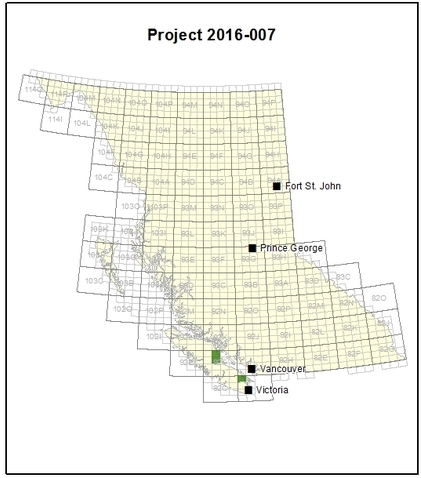Summary

This project aimed to build an understanding of mineralization at Lara and Mount Washington by analyzing soil, plant and snow samples in the area. It also aimed to improve the commercially-available process for analyzing samples.

Low-impact and effective methods for identifying mineral deposits help the minerals and mining industry to reduce the impact of exploration activity. They can also lower costs and increase efficiency of mineral exploration. This project helps to verify previous data from two sites while also helping to develop new and innovative technologies for future commercial use.
This project aimed to:
The innovative methods used in this study will help to develop new and low impact ways of identifying potential mineral deposits in British Columbia and beyond.
The Lara site is in Cowichan and Halalt territory approximately 25 kilometres southwest of Chemainus and 75 kilometres north of Victoria on Vancouver Island. Access to the site is by existing logging and drilling roads, and by BC Hydro right-of-way.
The Mount Washington site lies immediately north of the Mount Washington Alpine Resort in K’ómoks territory. Access to the sampling sites is by existing mining and drilling roads.
The presence of halogen elements (fluorine, chlorine, bromine and iodine) in soil, plant and snow samples can indicate the possibility of minerals below the ground.
At Lara, samples of the predominant tree species – Douglas-fir, western hemlock and western redcedar were collected, along with soil samples taken from the same location. At some sites samples of understorey species (plants that below beneath the forest canopy) — such as Western sword fern — were also collected.
At Mount Washington 18 passive ion collectors were installed, along with samples of foliage and fluids from mountain hemlock at some locations. Snow samples were also collected and analyzed.
The main challenge for this project was defining a method of analyzing the halogens and anions to geologically meaningful detection limits while dealing with the interferences caused by high organic contents of the chosen sample media. Identification of an effective analytical method involved a significant amount of research that was carried out at the BC Ministry of Environment in Victoria, BC and at ALS Minerals Ltd. in North Vancouver. Details of the development of the analytical methods are summarized in the final reports for each site.
This project demonstrates that sampling and analyzing halogen elements can be an effective new tool when exploring for buried mineral deposits. It also highlights the appropriate sample type and analytical methods to use.
However, these are specific to one forest type and surficial environment and do not encompass all potential environments in BC. More work is therefore needed to optimize sample types in other common forest types such as the spruce, lodgepole pine or Douglas-fir forests of the Interior. Further development of the analytical methods is important if halogen elements are to become widely used by the mineral exploration community.